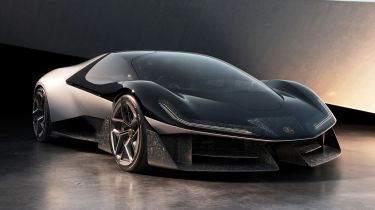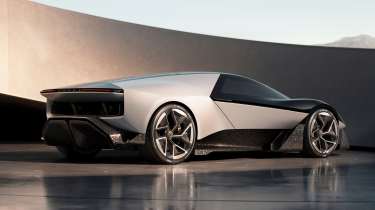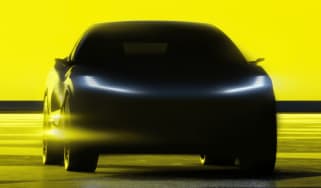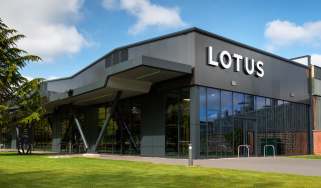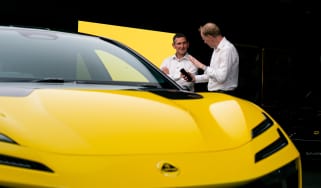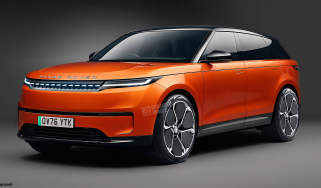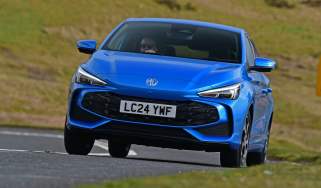Razor-sharp Lotus Theory 1 concept points the way to future electric sports car
The Theory 1 takes inspiration from Lotus’s latest road cars, and its history in Formula One
Lotus is set to reveal its first pure-electric sports car next year, but has given us a sneak peek of what’s to come with the new Theory 1 concept.
Incorporated into the razor-sharp design is an advanced aerodynamics package that takes inspiration from Lotus’s history in Formula One. The decision was therefore made to use the e-motor and battery assembly as a stressed member of the chassis, reducing weight and complexity. The active rear wing has also been mounted directly onto the motor and suspension assembly, apparently helping pin the car to the road.
The Theory 1 features a central driving position and a passenger seat on either side, making it a three-seater in the vein of the legendary McLaren F1. The seating has also been integrated into the structure of the car, so the steering wheel and pedals move towards the driver, and the recycled chopped carbon-fibre tub is fully exposed.
With 986bhp on tap and all-wheel drive, the Theory 1 is claimed to do 0-62mph in less than 2.5 seconds and hit a top speed of 199mph. Meanwhile, the 70kWh battery allows it to cover up to 250 miles from a single charge, helped by Pirelli P Zero Elect tyres that Lotus says enable up to a 10 per cent gain in driving range.
To create a more immersive experience for the occupants, the car’s 3D audio system delivers bespoke soundscapes, while inflatable pods on the seats and steering wheel can react in real time to provide more support, grip or even haptic feedback, such as pulses to tell the driver to make a turn.
According to Lotus, most modern cars have an average of 100 different surface materials, ranging from body panels to the dashboard. However, the Theory 1 uses just 10, including titanium, polycarbonate and recycled aluminium – each selected for its performance, durability, light weight and recyclable properties.
As well as unveiling its new show car, Lotus has launched its new design manifesto called ‘The Lotus Theory’, which will serve as the foundation of all its future models. Its three core principles – Digital, Natural and Analogue (DNA) – are meant to be blended with Lotus’s latest tech and innovations.
According to Lotus, Digital refers to immersive and intuitive experiences, Natural is about “human-centric design” and finally, Analogue is the brand’s “continuous advancement of performance engineering”.
Lotus ‘Type 135’ electric sports car
As we mentioned, Lotus is expected to unveil its first-ever electric sports car – codenamed the ‘Type 135’ – some time next year. The zero-emissions replacement for the Lotus Emira will use a bespoke platform and will be built in the brand’s base in Hethel, Norfolk with production set to begin in 2027.
Lotus Group’s now-former chief commercial officer, Mike Johnstone, told Auto Express “For us, what’s important is it’s the bullseye of the brand. So even though it’s electrified, it needs to have the same spirit as the Emira, as the Exige, as the Evora, etc, going back over the last 75 years. It needs to encapsulate the pure sprint of what that Lotus sports car should be.”
Click here for our list of the world's fastest accelerating cars...
Find a car with the experts

